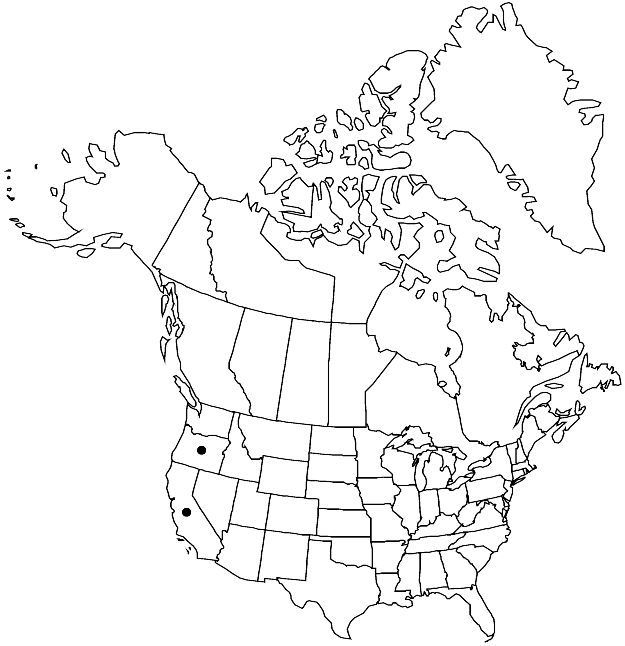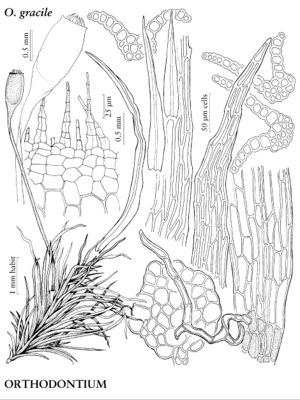Orthodontium gracile
Bryol. Europ. 4: 70. 1844.
Plants 0.5–2(–3) cm, glossy-vitreous. Stems with central strand absent. Leaves strongly flexuose distally when dry or moist, narrowly setaceous, (1–)2–3(–4.5) mm, 0.1–0.2 mm wide mid leaf, widest below mid leaf; margins broadly recurved; costa stereid cells absent. Sexual condition paroicous or polygamous; antheridia among perichaetial leaves below archegonia or in buds below perichaetium. Seta 0.4–0.5(–0.9) cm. Capsule subcylindric, (1–)1.5–2 mm, neck nearly as long as or to 1/3 capsule length; operculum short-rostrate; exostome teeth somewhat wider at base, smooth; endostome basal membrane absent, segments shorter than exostome teeth.
Phenology: Capsules mature winter–early spring.
Habitat: Moist creek ravines and canyons, base of cliffs, riparian forests of Acer, Alnus, Lithocarpus, Pseudotsuga, Sequoia, shaded decayed or charred logs and stumps, bark at base of trees, epiphytic on Sequoia sempervirens, peaty soil, soil over rock
Elevation: moderate elevations
Distribution

Calif., Oreg., sw Mexico, West Indies, Central America, South America, w Europe, Africa.
Discussion
W. Meijer (1951) depicted both the smooth exostome of Orthodontium gracile and the papillose one of O. pellucens with a median fissural line. The endostome of both species was drawn with the fissural line absent except at the base. As described and drawn by Meijer, the lengths of the endostomes of both species seem to be the same. Recent treatments of these characters diverge from Meijer.
Selected References
None.
